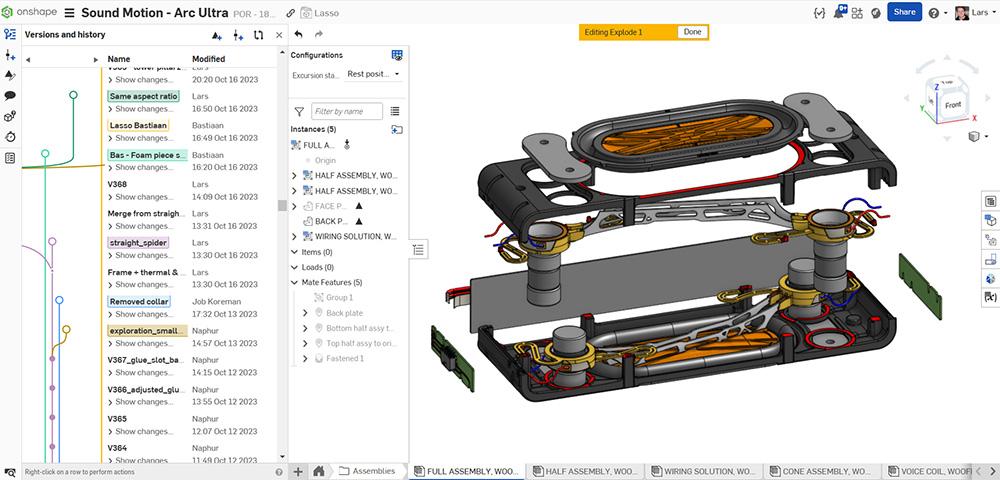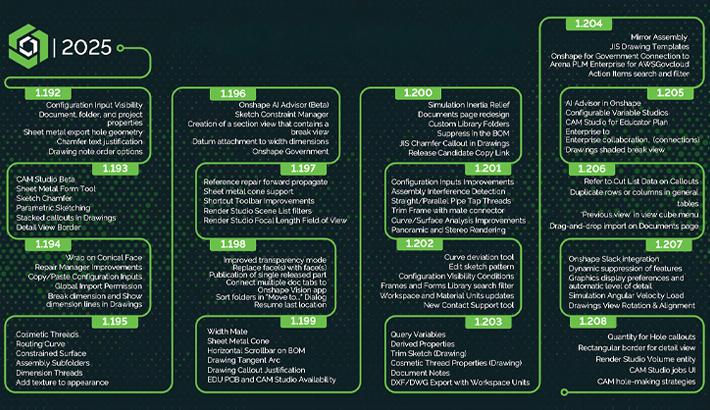
06:40
Focus on Product Innovation, Not on Administering Your CAD Toolset
Traditional CAD infrastructure presents inherent limitations that are increasingly inadequate in addressing the demands of global markets and the accelerating pace of technological innovation.
Cloud-forward enterprises are finding ways to innovate and pull ahead of competition. While some traditional CAD providers have transferred file-based CAD to the cloud, Onshape by PTC delivers a cloud-native platform for product development as a SaaS solution. Teams can move fast, stay aligned and scale without friction.
The Constraints of File-Based CAD Solutions
Traditional CAD infrastructure relies on desktop computing with on-premise compute clusters (if at all). Organizations handling large models or requiring extensive simulation/rendering face significant expense and management complexity with on-premise systems. Beyond hardware investment, the software and its deployment model introduces numerous operational challenges:
Extended Deployment Cycles
Establishing and integrating complex on-premise CAD and data management systems is often protracted, taking several months. In rapidly evolving markets, such delays are critical, causing missed market opportunities or loss of competitive advantage to faster enterprises.
Significant IT Overhead and Productivity Impairment
Administering desktop CAD environments necessitates dedicated IT resources for installation, configuration, patching, and troubleshooting across numerous workstations. Application installations and updates are frequently time-consuming, interrupting user workflows. Furthermore, software crashes are a persistent risk, capable of causing significant work loss and reducing individual and team productivity.
Pervasive Data Siloing
Traditional file-based CAD systems inherently create data silos, with design data typically fragmented across user machines, servers, or network drives. This fragmentation impedes consolidating, searching, and leveraging design data for business intelligence, analytics, or innovation.
Burdensome Upgrade and Maintenance Processes
Migrating major software versions is complex and precarious, involving extensive planning, testing, and execution, often halting production. The risk of data incompatibility or loss is a constant concern, causing stress and potential financial repercussions. Ongoing maintenance, patching, and compatibility issues also consume IT resources.
Inefficient Collaboration Mechanisms
Collaborating on design files in a desktop, file-based environment is cumbersome, relying on manual processes like vault check-ins/outs, email, or shared drives. These methods are prone to errors, version conflicts, and ambiguity about the current version. This lack of seamless, real-time collaboration inhibits teamwork, extends review cycles, fosters indecision, and leads to costly late-stage engineering changes when discrepancies are found late in development.
Collectively, these deeply embedded challenges result in missed innovation opportunities, protracted time-to-market, and increased operational expenditures, leaving organizations struggling to compete with more agile, technologically advanced rivals.
The Hybrid Model Limitations
File-based CAD providers have attempted to marry “file-based CAD” with “cloud-based file storage” solutions. This is the hybrid cloud model and comes with limitations.
Persistence of File-Based Architecture Issues
Even within a hybrid cloud configuration where files are backed-up in the cloud, the fundamental file-based architecture often remains. Issues such as data duplication, and inability to collaboratively edit CAD models persists.
Suboptimal Data Management Integration
In many hybrid solutions, data management functionality appears as a separate layer or an add-on component appended to the core CAD application, rather than being an intrinsic element of the platform. Hybrid solutions can’t branch and merge CAD documents or record the entire history of changes.
Continued Potential for Disruptive Upgrades and Reliability Concerns
Hybrid architectures may still encounter the challenges associated with traditional desktop CAD concerning application upgrades. Local applications crash and compute capacity is limited to what’s available on the local machine.
Increased Licensing Complexity
Cloud-enabled traditional CAD frequently introduces an additional layer of licensing complexity superimposed upon existing perpetual or subscription models.
Hybrid models prevent organizations from fully realizing the transformative potential that a truly cloud-native approach offers.
The Cloud-Native Advantage: CAD Reimagined for the Digital Age
The optimal solution is cloud-native CAD software, delivered as a true Software-as-a-Service (SaaS). This approach transforms how design and engineering teams operate, offering benefits that address traditional system limitations:
Enhanced Accessibility and Flexibility
Cloud-native CAD operates in a web browser, allowing access to tools and data from virtually any location or device with an internet connection. This facilitates seamless integration of dispersed internal teams, collaboration with external partners, and direct customer involvement in design reviews, dismantling geographical barriers.
Onshape savedDe Antonio Yachtsat least €28,000 ($30,900) in upfront CAD software costs and now saves approximately €10,000 ($11,100) in annual CAD maintenance fees.
Intrinsic High Reliability and Security
Cloud-native platforms ensure maximum uptime and security. Updates are seamless. Built on top of AWS, Onshape uses end-to-end encryption and continuous monitoring.
Custom Truck One Source estimates saving $500,000 in costs due to Onshape’s reduced downtime.
Optimized Performance for Superior User Experience
Onshape leverages AWS’s scalable power for optimized online performance, efficiently handling large models in-browser. This provides a smooth, responsive user experience, comparable or superior to desktop applications, regardless of local hardware.
The Forever Oceans team no longer experiences CAD crashes or lost work in the cloud.
Genuine Real-Time Collaboration
Cloud-native architecture enables multiple users to simultaneously work on the same design model. Changes are instantly visible, eliminating version control issues, reducing delays, keeping teams synchronized, and decreasing errors from outdated versions.
Onshape’s Simultaneous Editing allows BOA engineers to work in parallel, reclaiming 15 engineering hours weekly ($38,000 annual savings).
Open API with Extensive Integration Capabilities
Cloud-native CAD platforms offer robust Open APIs, enabling connection with other business applications (PLM, ERP, CRM, simulation, MES). This streamlines workflows, automates data transfer, and ensures consistency.
Energyminer uses Onshape's API integration with Simscale for their simulation software.
Open Feature Scripting for Customization and Automation
Onshape shares its feature-building tools, democratizing CAD functionality creation. This enables users to extend capabilities, improve efficiency, and standardize design practices.
XING Mobility’s custom Automatic Pack Builder, using Onshape’s FeatureScript, saved 400 engineering hours annually.
Cloud-Native Architecture Enables Integrated Data Management
Data management is intrinsic, including automatic version control and robust branching/merging. Teams can explore design alternatives in parallel without impacting the main design, then merge successful changes. This fosters creativity and accelerates innovation.

Onshape’s branching and merging reduced Sonos's time to an optimized solution by up to 30%.
Transitioning to cloud-native CAD mitigates legacy system burdens. Organizations can eliminate high upfront costs, reduce IT overhead, dismantle data silos, enable seamless collaboration, and access integrated data management. This shift adopts a more collaborative, flexible, reliable, and efficient operational methodology, crucial for competitiveness.
The Onshape Discovery Program
Learn how qualified CAD professionals can get Onshape Professional for up to 6 months – at no cost!
Latest Content

- Case Study
- Robotics
Saga Robotics: Powering the Future of Sustainable Farming with Cloud-Native Onshape
01.05.2026 learn more

- Blog
- News from Onshape @ PTC
Onshape at CES 2026: Where Innovation Meets the Show Floor
01.05.2026 learn more
- Blog
- News from Onshape @ PTC
Onshape’s Top 10 Best and Newest CAD Design Software Features of 2025
12.23.2025 learn more


